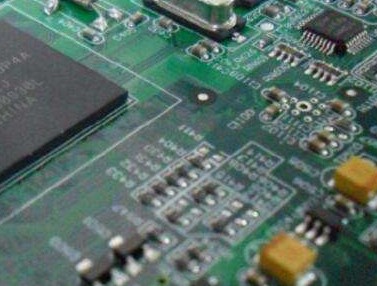The process of using resin plug holes in PCB is often due to BGA parts, because traditional BGA may make VIA between PAD and PAD to the back of the wiring, but if the BGA is too dense, it will lead to VIA.
When you can’t go out, you can drill the via directly from the PAD to another layer for routing, and then fill the hole with resin to fill the hole with copper plating into a PAD, which is commonly known as the VIP process (via in pad),
If you just make vias on the PAD without plugging the holes with resin, it is easy to cause leakage of tin, leading to short circuits on the back and empty soldering on the front.

The process of PCB resin plugging includes drilling, electroplating, plugging, baking, and grinding. After drilling, the hole is plated through, then the resin is plugged and baked, and the final step is to grind and grind it.
Since the flat resin does not contain copper, another layer of copper is needed to turn it into a PAD. These processes are done before the original PCB drilling process, that is, the fortress hole is first
The holes are processed, and then other holes are drilled, according to the original normal process.
If the plug hole is not properly plugged, and there are bubbles in the hole, because the bubbles are easy to absorb moisture, the board may burst when the board is passed through the tin furnace, but if there are bubbles in the hole during the plugging process, bake
At this time, the air bubbles will squeeze out the resin, resulting in a situation where one side is recessed and the other is protruding. At this time, defective products can be detected, and the board with air bubbles will not necessarily burst, because the board will burst.
The main reason is moisture, so if the board or board that has just been shipped from the factory has been baked during the loading, generally speaking, it will not cause the board to burst.
Coil board: The circuit pattern is mainly winding, and the circuit board with etched circuit instead of traditional copper wire turns is mainly used in inductance components. It has a series of advantages such as high measurement, high accuracy, good linearity, and simple structure.
Modular board, have you heard of modularity and program modules? The so-called module board is a collection of units that can realize a certain function. If these modules are individually made into a board, it becomes a module board, such as a display board and a power supply board. For air conditioners, there are AD/DA modules, clock modules, etc., which can be made into small boards and plugged into the main control board for application. In this way, if the power supply modules are the same for air conditioners of different specifications, the same type of power supply board can be used without redesigning, which reduces the cost.
In comparison, the coil board is more portable, small in size and light in weight, with an openable coil, convenient for access, and a wide frequency range. From the drawing, the coil board has a very obvious difference, there are many windings like fingerprints.